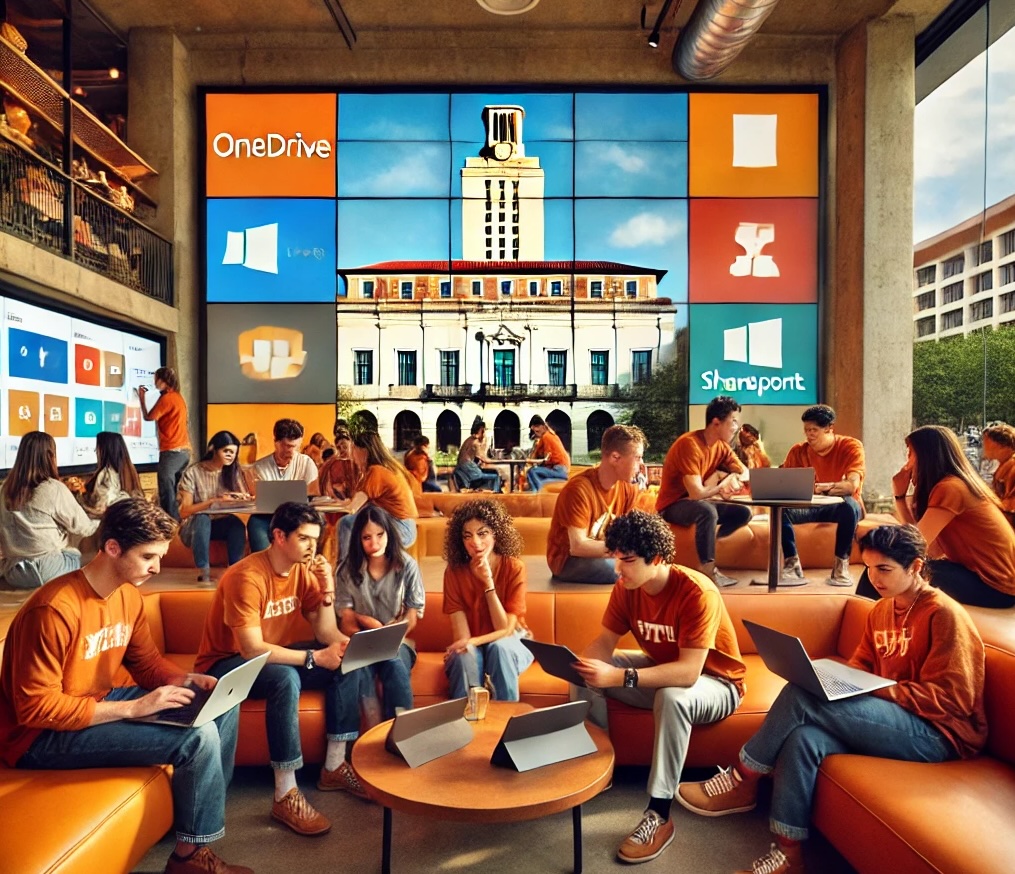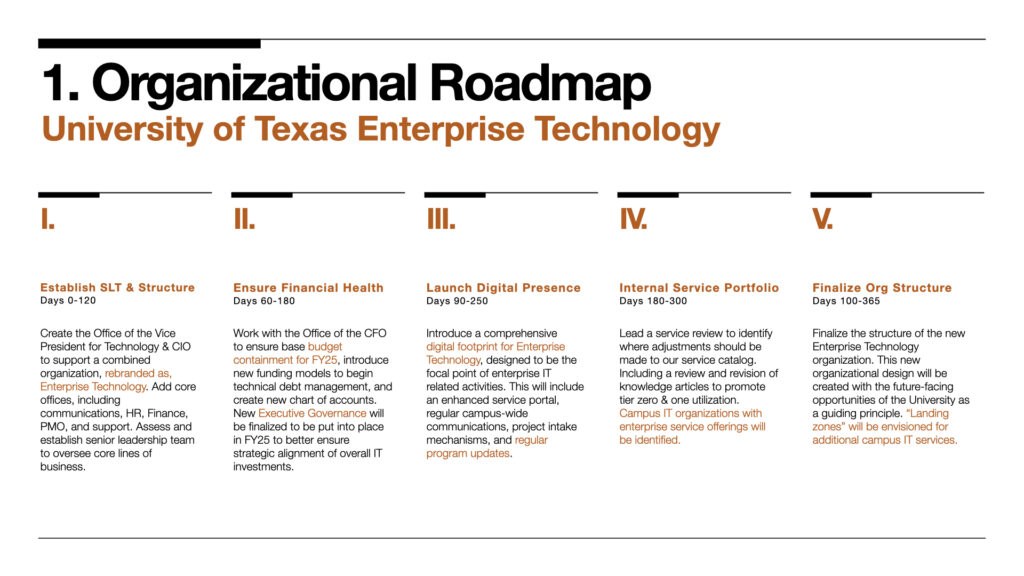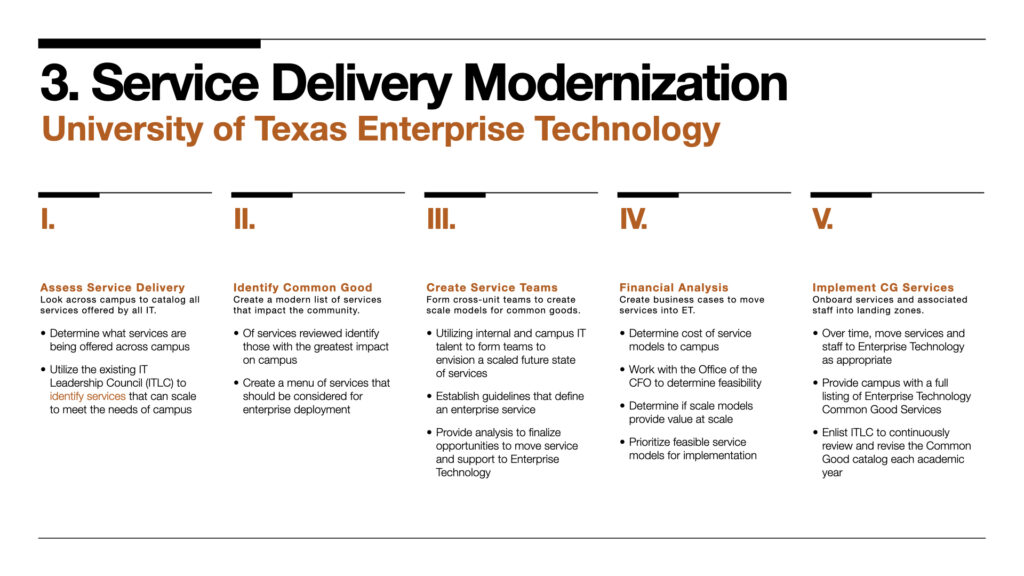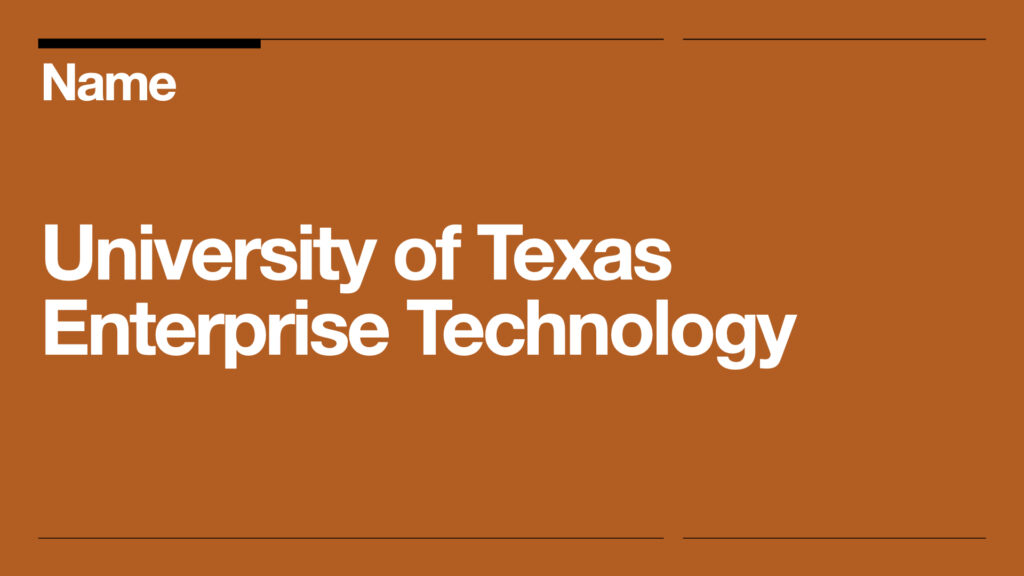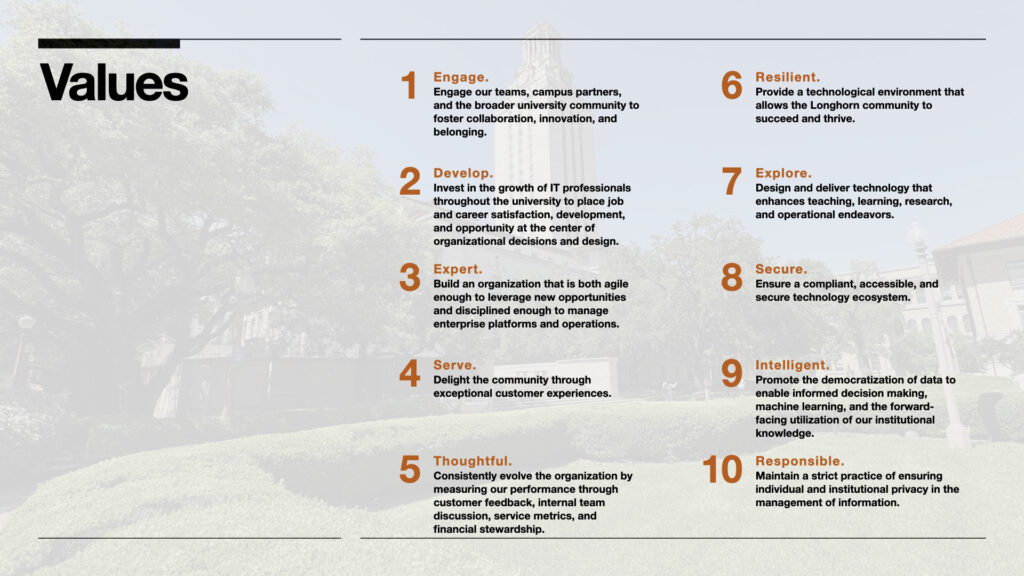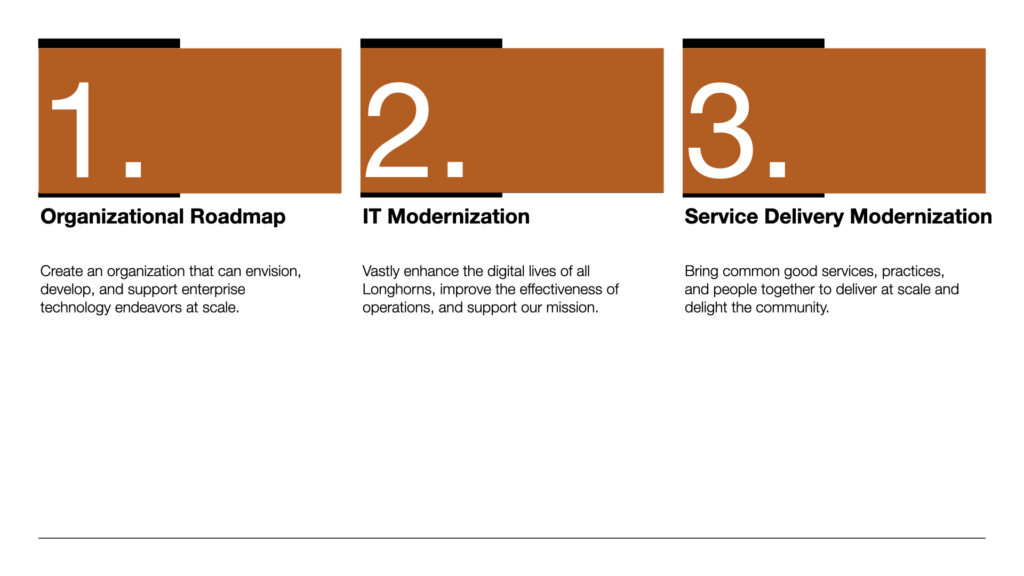At The University of Texas at Austin, we understand that data is essential for making informed decisions and driving innovation. I’m thrilled to announce that Data to Insights (D2I) will officially start reporting to the Vice President of Technology and Chief Information Officer on May 1, 2025.
This transition will enhance collaboration, align practices, and strengthen our commitment to providing top-notch data solutions for our faculty, staff, and students. By integrating D2I under the VP’s portfolio alongside Enterprise Technology, we’re aiming for a more unified and scalable approach to data governance, analytics, and tech services across the university.
Brian Roberts, Vice Provost for Data to Insights, will take on a special advisor role to the Office fo the CIO during the transition as we continue planning for D2I’s long-term future. Kathryn Flowers will join the CIO senior leadership team will lead the D2I team as the Executive Director, ensuring smooth leadership and execution of D2I’s mission.

Rest assured, this transition won’t cause any immediate changes to D2I’s ongoing projects or services. I am confident that our teams will work closely to make this change seamless and enhance our ability to deliver value to the university community.
Enterprise Technology and D2I will be partnering with the CFO’s Office, the Provost’s Office, and the COO’s Office to assess and realign the university’s data analytics goals in support of institutional priorities, with an emphasis on scaling adoption of and best practices in interaction with the Data Hub. Over the next six months, these teams will collaborate to develop a comprehensive data analytics strategy, reliant on the centralized Data Hub, to be presented to university leadership, with the aim of implementing it by the FY26–27 fiscal year. This effort will include extensive stakeholder engagement, including interviews and cross-functional collaboration across multiple groups, to ensure the strategy is informed, aligned, and positioned to drive meaningful impact across the university.
Thank you for your continued support as we take this important step in aligning our technology and data strategy with the university’s broader goals. If you have any questions or feedback, please feel free to reach out.
